
Topics
Guests
- Tiphanie Yaniqueaward-winning poet and novelist from U.S. Virgin Island of Saint Thomas. She’s an associate professor in the English Department at Wesleyan University and the author of the poetry collection Wife and the novel Land of Love and Drowning.
Hurricane Irma made landfall in the U.S. Virgin Islands as a Category 5 storm just over one week ago, knocking out electricity and running water, and cutting off communications with the outside world. Now, Governor Kenneth Mapp says the islands of Saint John and Saint Thomas are still nearly entirely without power. The hurricane also destroyed schools and the main hospital on Saint Thomas. The devastation was so extensive, it can be seen from space. Earlier this week, a U.S. military amphibious ship arrived on Saint Thomas ladened with equipment and supplies. The islands have also received emergency aid from residents of the nearby island of Puerto Rico, where volunteers banded together to collect supplies and transport them on dozens of ships. But while Hurricane Irma hit the U.S. Virgin Islands days before it made landfall on the Florida Keys, the Virgin Islands have been largely forgotten in the wall-to-wall U.S. media coverage of the storm. And that omission is even more striking given that the U.S. Virgin Islands are in the midst of celebrating their centennial as U.S. territory. We speak with Saint Thomas native Tiphanie Yanique, award-winning poet and novelist. She’s an associate professor in the English Department at Wesleyan University and the author of the poetry collection “Wife” and the novel “Land of Love and Drowning.”
Transcript
AMY GOODMAN: This is Democracy Now!, democracynow.org, The War and Peace Report. I’m Amy Goodman. We turn now to the Virgin Islands, to the U.S. Virgin Islands, where Hurricane Irma made landfall as a Category 5 storm just over one week ago, knocking out electricity and running water, cutting off communications with the outside world. Now, eight days later, U.S. Virgin Island Governor Kenneth Mapp says the islands of Saint John and Saint Thomas are still nearly entirely without power. The hurricane also destroyed schools and the main hospital on Saint Thomas. The devastation was so extensive, it can even be seen from space. Satellite images show the U.S. and British Virgin Islands were green and lush before the storm, while the post-storm images show the islands are mostly brown, after the hurricane uprooted nearly all the trees. Earlier this week, a U.S. military amphibious ship arrived on Saint Thomas laden with equipment and supplies. The islands have also received emergency aid from residents of the nearby island of Puerto Rico, where volunteers banded together to collect supplies and transport them on dozens of ships.
But while Hurricane Irma hit the U.S. Virgin Islands days before it made landfall on the Florida Keys as a downgraded Category 4 storm, the Virgin Islands, overall, have been largely forgotten in the wall-to-wall U.S. media coverage of the storm. And that omission is even more striking given that the U.S. Virgin Islands are in the midst of celebrating their centennial, a hundred years as a U.S. territory.
Well, our next guest, award-winning author Tiphanie Yanique, recalls how she learned about the widespread devastation on her home island of Saint Thomas, not from the scant U.S. media coverage, but from her Aunt Cecile, who texted her in the days after the storm, quote, “The post office is gone. … Grocery stores gone. Schools gone. Hospital gone.” In an op-ed for The New York Times headlined “Americans in a Battered Paradise,” Yanique goes on to write, quote, “As we have over the last 100 years, we ask again, with this storm: What kind of Americans are we? Are we part of a multitiered system of Americanness? Do the real Americans know about this? Are you, real Americans, O.K. with this? It doesn’t seem particularly American to me,” she wrote.
Well, for more, we are going to Tiphanie Yanique herself, here in studio, the award-winning poet and novelist from the U.S. Virgin Island of Saint Thomas. She’s an associate professor in the English Department at Wesleyan University and the author of the poetry collection Wife and the novel Land of Love and Drowning.
We welcome you to Democracy Now! It’s great to have you with us.
TIPHANIE YANIQUE: Thank you. It’s so good to be here.
AMY GOODMAN: So tell us about your island. And tell us what’s happened now, what you understand, and then the history of this island. Most people don’t even understand that there are—which countries are—which islands are territories, which are U.S., which are Dutch, which are French. Can you explain?
TIPHANIE YANIQUE: Yes. The Virgin Islands is made up of both the British Virgin Islands and the U.S. Virgin Islands. And our Virgin Islands is Saint Thomas, Saint Croix and Saint John and the smaller surrounding islands. Often we are confused with BVI or even with other islands that begin with “Saint,” like Saint Martin.
But I think it’s important that the nation really recognize who the Americans are in the Caribbean, and pay us a little bit of extra attention. One of the things that happened for me when I was trying to find coverage about the Virgin Islands and about my home was that I was seeing lots of things on television about the region. I was so pleased, as someone who is from the Caribbean region, to see that there was beginning to be some attention to the Caribbean, in mass. And it is true that the United States has a responsibility to the Caribbean as the most powerful economic force in the region. It’s important that we pay attention to Sint Maarten and Saint-Martin, which are Dutch and French. It’s important that we pay attention to the British islands. But, lo and behold, we have American citizens in the region, as well. And these are not just American citizens who are visiting as tourists or American citizens who have newly moved to the Caribbean. But we have American citizens in the U.S. Virgin Islands who were born American citizens, who are American citizens by virtue of having been born on American soil, the U.S. Virgin Islands. And I was really quite remiss and saddened to see that the news media said that Irma had made landfall in U.S. soil when it hit the Florida Keys, which, in fact, it had made landfall on U.S. soil days before, when it hit Saint Thomas and Saint John in the U.S. Virgin Islands.
AMY GOODMAN: So, talk about your Aunt Cecile. Talk about your family in Saint Thomas right now.
TIPHANIE YANIQUE: Well, luckily, many people on island do have phone service. Cellphone service on certain parts of the island is possible. And I have been able to be in touch with Virgin Islanders on the ground, and, again, not just Virgin Islanders who are evacuating, not just American citizens visiting or new American citizens who are evacuating the island, but American citizens and Virgin Islanders who are staying on the island and are working together to really build back the Virgin Islands already. And I have to say, there’s been an incredible amount of goodwill by private citizens in the Virgin Islands who are working together to bring things slowly back.
It is true that the devastation is incredible. The devastation is unbelievable. Not only the pictures that we have been seeing online, but the word that I’ve been getting from Virgin Islanders on the ground really demonstrates that it is unbelievable devastation. That being said, there are grocery stores that are now opening and are actually selling fresh goods to Virgin Islanders. Restaurants have opened and are selling hot burgers, sometimes giving them away for free as part of their service to the community. Private citizens have been helping to clear the roads and share clothes and food and water with each other. So it’s devastating, but people have been coming together.
AMY GOODMAN: So, Puerto Ricans are helping?
TIPHANIE YANIQUE: Puerto Ricans have been helping. And Crucians, who are from our neighboring island of Saint Croix, have been helping. People are helping, not by mailing things, because our post office is destroyed, but have been actually boating over goods. Often, again, these are private citizens who are using their private resources to bring goods over from Puerto Rico and Saint Croix. And both Puerto Rico and Saint Croix are American spaces, so these are our fellow Americans in the Caribbean supporting us and helping us out in Saint Thomas and Saint John.
AMY GOODMAN: Can you talk about the difference in aid between what, for example, France is doing, when it comes to Saint Martin, and what the U.S. is doing, when it comes to the U.S. Virgin Islands, what Britain is doing, when it comes to the British Virgin Islands?
TIPHANIE YANIQUE: Well, to be honest, Amy, when I first started getting information about the Caribbean being hit by Irma, it was via the attention that France was giving to its Caribbean colonies and its Caribbean spaces—sorry, not colonies, but Caribbean spaces—and the attention that the British were giving to their Caribbean holdings in the region, as well. It was impossible to find information about the U.S. Virgin Islands. The president of France is already on the ground in the Caribbean right now, surveying the damage with his own eyes. And a lot of this attention was happening before Irma even hit.
Now, it is true that since Irma hit the Virgin Islands and then, eventually, the Florida Keys and Florida, by the time it hit the continent, it was downgraded, as you said, to a Category 4, whereas it hit the Virgin Islands, U.S. soil, as a Category 5, what many weather experts are saying is the worst hurricane to ever hit the region. Now we are beginning to get attention, and there have been some really great articles—John Nichols’ article in The Nation and many other articles that are bringing attention to the Virgin Islands.
But I was watching Tom Bossert’s, I think, September 12th report about the hurricane hitting the Caribbean with close attention. And he, who is the White House’s national home security adviser—he spoke about the Caribbean in very focused ways, which, as a Caribbean person, I really appreciated. He talked about Saint Thomas and Saint Martin and the kind of attention that they were both getting from the U.S. But he lumped in the Virgin Islands with Saint Martin as if they were really similar and exactly the same kind of spaces, with the same sort of relationship to the United States. So, it felt to me as if he was saying San Diego and Tijuana were both hit by the same storm. And it’s true Saint Martin and Saint Thomas were hit by the same storm, but only one of those is U.S. soil. And we didn’t get any sort of special attention from our fellow Americans. And I think that’s an important thing to remember. Virgin Island people are Americans. And we’re not only American citizens, but our land is American soil and should be getting special attention.
AMY GOODMAN: I wanted to ask about Saint Martin, which is not the U.S. Virgin Islands.
TIPHANIE YANIQUE: No.
AMY GOODMAN: Part of the Leeward Islands in the Caribbean Sea, comprises two separate countries divided between its northern French side, called Saint-Martin, and the southern Dutch side, Sint Maarten. Interestingly, President Trump has a $17 million chateau on the French side of the island in the posh neighborhood of Plum Bay Beach. His mansion went unscathed.
TIPHANIE YANIQUE: Well, this hurricane has really demonstrated the differences between the haves and the have-nots. And I would say that’s happening even in the Virgin Islands, even in the U.S. Virgin Islands, that homes where the families were prepared, had generators, they are showing electricity, they have running water. And then there are homes, whether it’s public housing, that have been, in some cases, entirely destroyed, and those communities do not have running water. So, what we’re seeing in Saint Martin is being reflected in Saint Thomas and Saint John, as well.
AMY GOODMAN: I wanted to go back in history, because this is so significant. This is the centennial. I wanted to turn to an archival video clip of Transfer Day, March 31st, 1917, when the Virgin Islands were transferred from Danish to American control.
NEWSREEL: Denmark sold these islands to the United States for $25 million. The Americans arrive to take possession. This is the only picture in existence of the ceremonies that mark the transfer of the Virgin Islands to the United States. The Danish officials come out to greet the Americans. Permission to add this peacefully acquired possession to round out the geographical contents of the United States. The treaty of transfer is read by the American admiral. Slowly, the Danish flag is lowered.
AMY GOODMAN: This is your home. This is Saint Thomas, the Danish flag lowered, the American flag raised. Why did it happen?
TIPHANIE YANIQUE: Well, the Danish and the Americans were in conversation for decades about trading the Virgin Islands as a space. There were many people in Denmark who didn’t want to give us up, and there were many people in America who weren’t sure if it was a right move for the United States. It seems to me the historians say that because of World War I and some other national security concerns, that it made sense for the U.S. to have some space in the Caribbean, and so we were bought in 1917. March 31st, in fact, my youngest son is also born on March 31st, so this has national significance for me and cultural significance, but even personal significance.
So we became Americans—sort of—in 1917. We actually weren’t able to vote until 1970—seven-zero. And even in 1970, when we could finally vote for our own governor and legislative bodies, we still could not vote for national representation. In fact, right now in the Virgin Islands, we are American citizens, and we carry American passports, but we do not have voting representation in Congress. Our congresswoman, Stacey Plaskett, cannot vote in Congress. We cannot vote for president of the United States. But we do pay federal taxes.
AMY GOODMAN: You were deeply concerned about reports of looting and how this was being conveyed in the media. Can you talk, very quickly, about this?
TIPHANIE YANIQUE: Yes. It makes sense that after a disaster of this magnitude—and I do want to say that although things are coming together, the disaster is seriously destructive—that there would be some immediate desperation. So I think we can all agree that there would be some immediate concerns, people who maybe weren’t quite prepared. However, the word I’m getting from eyewitnesses on the ground, from Virgin Islanders who are invested in the community and are on the ground in our shopping districts and shopping areas, they are saying that stores are beginning to open, and people are going in with their money and buying things. Restaurants are opening and selling drinks and selling food. People are sharing resources. This is not a scene of looting at all. These are not looting conditions in the Virgin Islands.
And I have been really disappointed by the national media coverage in this regard, even by journalists who are finally now on the ground in the Virgin Islands. It seems to me—and I want to be cautious. I don’t want to say that the journalists have been irresponsible, but I do think the journalists could be doing a little bit more legwork to find Virgin Islanders who are part of the community, and not only visitors to the island who are evacuating and are leaving—and in many cases, they are under a lot of stress, they want to get back to their homes, which is on—which are on the continent of the United States—but that they actually—the journalists actually look at what’s happening on the ground by eyewitnesses. The media coverage has actually said looting, but it’s been from people who are, in their own admission, hearing this second- and third- and fourth-hand, whereas what I’m getting, actually, does not relay looting conditions at all.
AMY GOODMAN: And the multicultural, multiracial composition of the U.S. Virgin Islands?
TIPHANIE YANIQUE: The Virgin Islands is a very, very unique part of the United States nation. For a hundred years, we have been working as a multicultural, multiracial, multireligious system. My own graduating—my own senior graduating class of high school, less than 30 people, was made up of people whose heritage, and, in some cases, parentage, were from Saudi Arabia, France, India, Nigeria, Colombia. We were a group of people who were Muslim, evangelical Christian, Catholic, Hindu, atheist, agnostic. And this is less than 30 people in a group, a graduating high school class. The Virgin Islands is a very unique place, but it’s also a place where the rest of the nation is really heading in this direction, whether we want to admit it or not as an American nation. We are becoming a place where diversity and inclusion is our reality. And the Virgin Islands has been doing diversity and inclusion as Americans for a hundred years.
AMY GOODMAN: I want to thank you so much for being with us. I hope you will come back, so we can talk about your novel.
TIPHANIE YANIQUE: Oh, thank you.
AMY GOODMAN: Tiphanie Yanique is a award-winning poet, a novelist from the U.S. Virgin Island of Saint Thomas, hit hard by Hurricane Irma, Category 5 storm. She’s a professor of English at Wesleyan University, author of a poetry collection called Wife and the novel Land of Love and Drowning. We will link to her recent op-ed in The New York Times headlined “Americans in a Battered Paradise.”
This is Democracy Now! When we come back, the effects of these hurricanes have been massive in the Caribbean and the United States, but they actually don’t compare to what’s happening in South Asia. Over 1,300 people have died in the flooding in Nepal and India and Bangladesh. We’re going to go to Kathmandu, Nepal. Stay with us.
[break]
AMY GOODMAN: “Turn on the News” by Grant Hart of Hüsker Dü. Grant died on Wednesday after a battle with cancer.


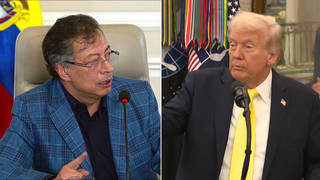
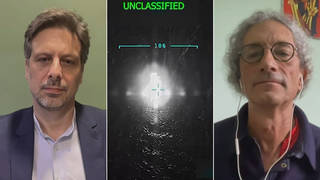
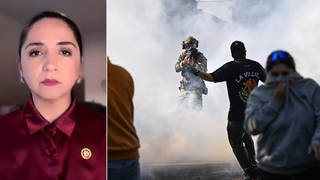





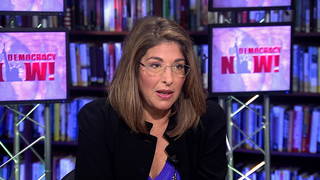
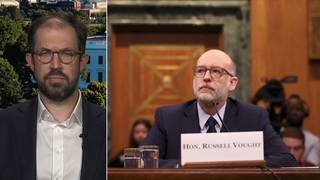
Media Options